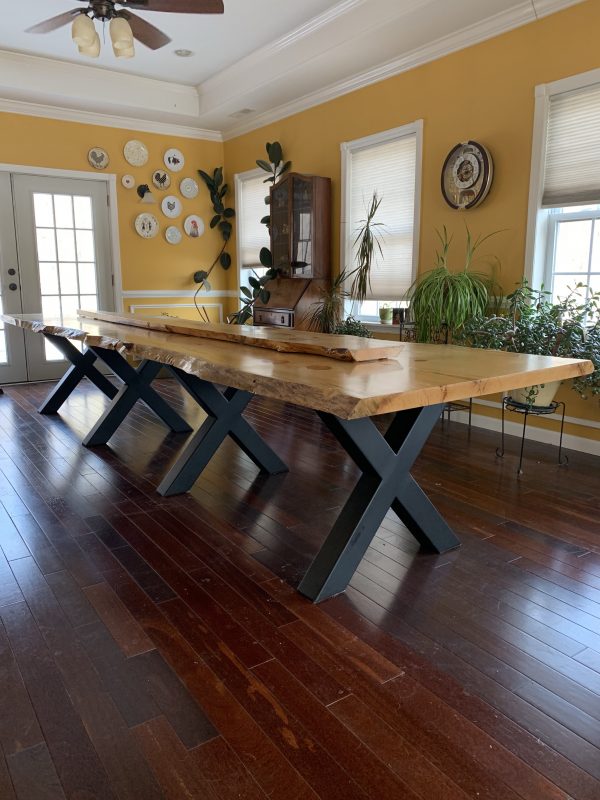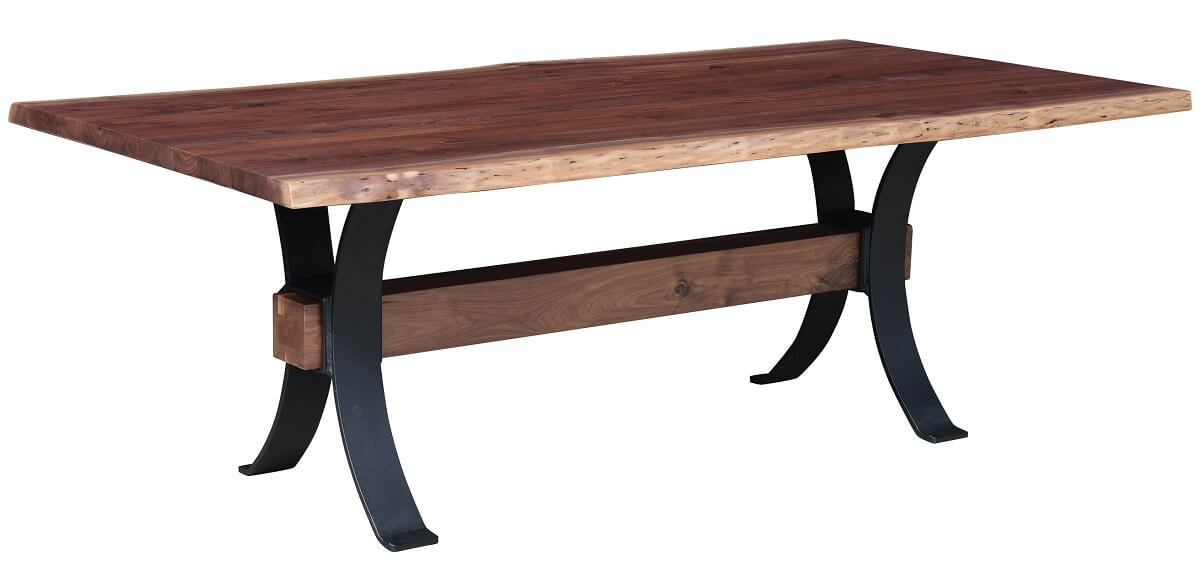How to Select the Perfect Eating Room Table Legs for Your Home Design
Picking the perfect dining room table legs is a nuanced procedure that calls for cautious consideration of various elements, including your space restraints, visual preferences, and useful requirements. The interplay in between materials, designs, and dimensions can significantly affect the ambiance of your eating location, making it crucial to approach this decision carefully.
Assess Your Eating Room
Analyzing your dining area is vital for selecting the right table legs that complement both appearances and performance. Begin by determining the measurements of your eating area, including ceiling elevation, floor space, and proximity to various other furniture. This info will certainly aid identify the suitable dimension and height of your table, which straight affects the option of table legs.
Next, think about the style and layout of your eating room. An open-concept style might profit from table legs that supply visual agility, such as slim metal or acrylic alternatives. On the other hand, a more typical setup could call for strong wooden legs that give a feeling of permanence.
Assess the existing color combination and products in your dining location. Integrating the table legs with these elements produces a cohesive appearance that boosts the overall design.
Inevitably, a thorough evaluation of your eating room will lead you in making an informed decision, making sure that your table legs not just enhance the visual allure yet likewise serve sensible purposes.
Consider Your Design Preferences
When selecting eating room table legs, it is important to review your individual design choices, as they considerably influence the general visual of your dining area. Your choice of table legs can either complement or contrast with existing decor, making it vital to straighten them with your favored interior layout theme.
If your home leans towards a contemporary visual, take into consideration smooth steel or minimalist wooden legs that supply a clean, clean appearance. For a more traditional strategy, elaborate wooden legs with complex makings can add a touch of sophistication and elegance. Industrial styles gain from robust, raw materials such as reclaimed wood and metal mixes, mirroring a tough beauty.
Additionally, farmhouse and rustic designs frequently prefer sturdy, chunky legs that evoke a sense of heat and convenience. Conversely, if your design is diverse, you may select non-traditional shapes or a mix of products to develop visual passion.

Evaluate Product Options
The choice of product for eating space table legs plays a crucial role in both longevity and visual appeal. Common products include timber, metal, and composite alternatives, each offering distinct characteristics that can affect the total appearance and long life of your table.
Wood is a timeless selection, known for its heat and adaptability. Hardwoods like oak and walnut provide extraordinary toughness and can be completed in different spots to match any type of decoration. However, softwoods like ache are much more vulnerable to scratches and damages, making them much less suitable for high-traffic locations.
Metal legs, often crafted from steel or aluminum, exhibit modernity and commercial charm. They are immune and very long lasting to use, making them suitable for family members with kids or constant events (dining room table legs). Furthermore, metal can be ended up in numerous shades, improving the personalization possibilities
Composite products, such as MDF or laminate, deal cost and diverse styles. While generally less durable than strong wood or steel, they can still offer a fashionable appearance and are often very easy to maintain.
Inevitably, the material you choose need to align with your way of living, aesthetic preferences, and the degree of use your eating table will experience.
Determine Elevation and Size
Selecting the web suitable height and size for your dining-room table is vital for both functionality and convenience. The standard elevation for eating tables normally ranges from 28 to 30 inches, permitting sufficient legroom for most people when seated. It is vital to take into consideration the dimensions of your eating room and the types of chairs you prepare to make use of.

Additionally, take into consideration the proportions of your dining space. A larger table in a large location can produce a grand setting, while a smaller table works well in even more intimate setups. Eventually, the ideal elevation and dimension will certainly harmonize with your overall decor and improve the eating experience for you and your visitors.
Explore Customization Opportunities

Additionally, the layout of the legs can be tailored to fit different styles, such as rustic, modern-day, or commercial. For circumstances, conical legs can evoke a mid-century modern feeling, while chunky, block-style legs might reverberate with conventional or farmhouse decor.
Property owners can likewise discover color coatings, from natural timber spots to paint, allowing them to match or comparison with the tabletop and bordering More Info decor.
Moreover, leg elevation can be adapted to suit particular seating plans or individual preferences, improving both comfort and capability.
Lastly, one-of-a-kind embellishments, such as carvings or decorative braces, can even more customize the table legs, making the eating experience not just a dish however a declaration piece in the home. By taking into consideration these personalization alternatives, home owners can create a dining space table that genuinely mirrors their individuality.
Final Thought
Picking the perfect dining-room table legs calls for careful factor to consider of different variables, including the dimensions of the dining room, design choices, material toughness, and wanted elevation. Modification alternatives further enhance the ability to accomplish a natural visual that complements the total style. By methodically reviewing these components, house owners can make certain that the chosen table legs not only satisfy functional demands yet also add positively to the dining experience and ambiance of the home.
Selecting the perfect eating room table legs is a nuanced process that requires careful consideration of various components, including your room restraints, visual preferences, and practical needs.Assessing your dining space is essential for selecting the right table legs that enhance both visual appeals and functionality.When determining dimension, gauge the location where the table will be placed to ensure it fits comfortably, allowing for at the very least 36 inches of clearance around the table for easy activity. A larger table in a roomy area can develop a grand setting, while a smaller sized table functions well in more intimate setups.Picking the suitable dining room table legs calls for cautious consideration of different aspects, including the measurements of the dining space, design preferences, product longevity, and preferred height.